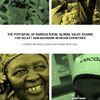As Global Value Chains are becoming an ever more central component of modern international trade, understanding the role of regulation in agricultural Global Value Chains is a key condition to formulating appropriate strategies to value chain upgrading. Through the cases of the cotton and tobacco sectors in Malawi and Zambia, this report analyses the role of regulation in harnessing the potential of Sub-Saharan African countries to trade value-added products with Asia. It is found that while the wide array of preferential access agreements provide enormous potential to export more highly finished products to world markets, current regulatory structures are failing to facilitate value-chain upgrading. Lack of national regulations on enforcement of contracts and comprehensiveness are identified as a key hindrance, for it discourages investors to take the first steps to upgrading.
Global Value Chains are becoming an ever more central component of modern international trade. Despite a new body of research attempting to map drivers and determinants of Global Value Chains, there still remains a lack of research specifically into the role of regulation in agricultural Global Value Chains that leaves a significant gap in the abilities of countries to formulate appropriate strategies to value chain upgrading.
This report analyzes two sub-Saharan African cases of GVC participation and their limitations and potential in trade with Asia from a regulatory perspective. By focusing on Malawian and Zambian cotton and tobacco value chains an overview of the trade performance of the two commodities is provided using trade in different levels of upgrading of the selected commodities (for instance: unmanufactured cotton, cotton yarn not for retail, cotton yearn for retail). For both countries, cotton and tobacco are important cash crops that constitute a significant portion of agricultural exports. In the two countries a severe lack of upgraded exports and an overarching focus on exports of raw tobacco and cotton has been observed.
The fluctuations and changing levels of trade (for the chosen commodities over the past 10 years) are explained with regards to a series of factors but with a focus on regulation. The role of regulation, specifically the key multilateral and bi-lateral trade agreements along with pertinent national-level regulation is analyzed in light of the observed patterns of upgrading. It is found that much of the rapid expansion of trade of the raw commodities owes to tariff-free trade agreements with China. There are some notable exceptions to the overall lack of upgrading (for instance Chinese investment in Malawi), however it is found that the current regulatory structures are failing to facilitate value-chain upgrading. In fact, the tariff-free agreements have in some cases meant a flooding of the markets with cheaper and higher quality finished goods (within our chosen commodities, clothing) that form a restraint to valueaddition, as Zambia and Malawi would struggle to compete.
It is found that the current lack of participation at any level higher than unmanufactured exports forms a significant and unsustainable barrier to development in the two selected countries and that current regulation should be re-formulated in line with a strategy for upgrading. A re-negotiation of such bi-lateral agreements to the benefit of the African nations has been suggested. The wide array of preferential access agreements in place implies the two countries have enormous potential to export more highly finished products to world markets. The lack of investment into processing and assembly remain a key hindrance. Higher levels of trade, in valueadded products can mean higher levels of export income and employment for the cases chosen. The lack of national level regulation is also found to be a limitation to upgrading, specifically with regards to enforcement of contracts and comprehensiveness, which further discourages investors to take the first steps to upgrading (investing in factories).
Finally, the report also presents a framework for future research into the area of regulation in Sub-Saharan African agricultural value chains by laying out the process used to build the case studies including key sources and methods.
